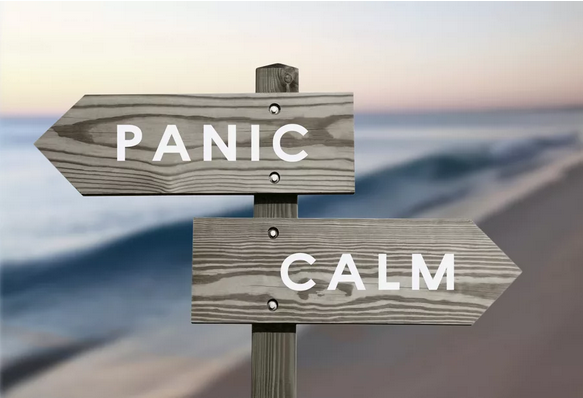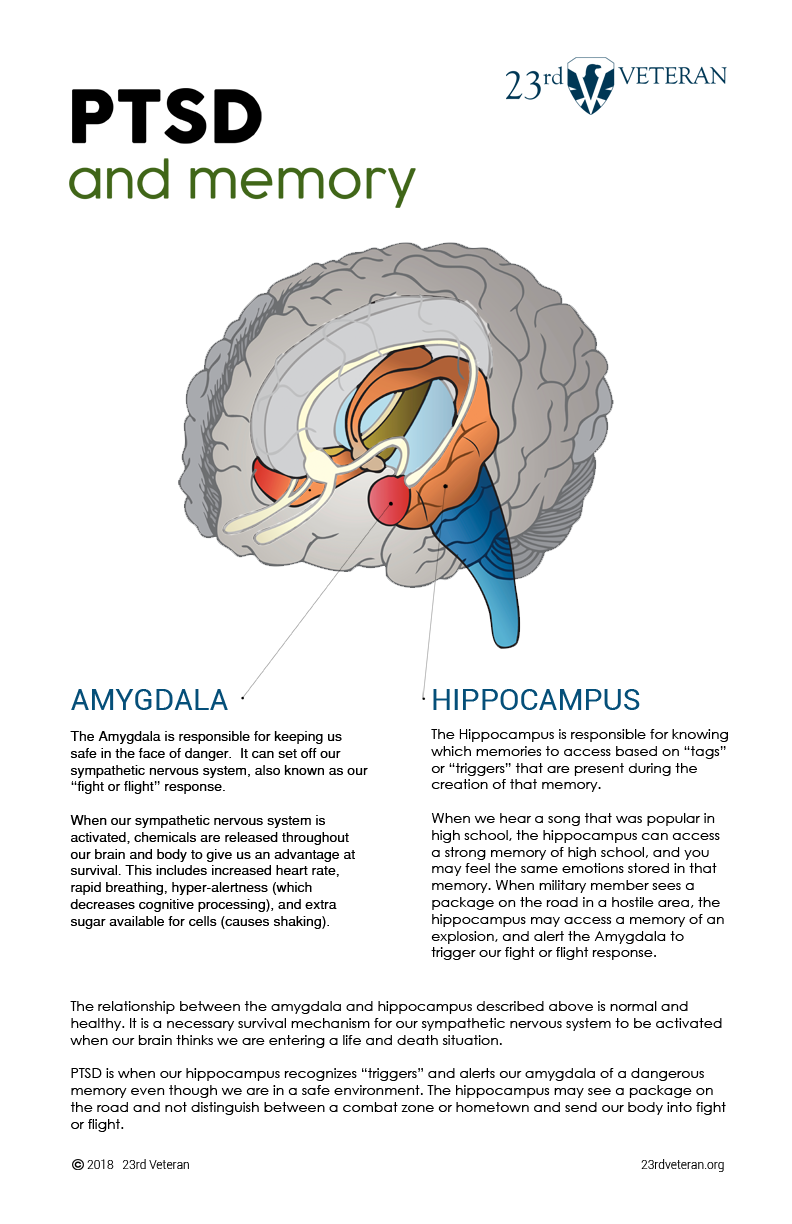PTS Simplified
Understand Combat Stress in 5 Minutes
Why do we struggle to remember the name of a childhood friend we sat next to every day for an entire school year, yet the memory of a single moment we got into a fight is so clear? Animals have an intriguing ability to remember important survival situations far better than normal everyday activities.
Brain-Derived Neurotrophic Factor
Brain-Derived Neurotrophic Factor (BDNF) has been scientifically proven to help our neurons grow. Essentially when BDNF is available, our memories can be created much stronger than when BDNF is not available. This is a very useful survival mechanism, allowing our bodies to prepare for a life-threatening event without us even having to think about it. It's no wonder that while we can't remember what kind of car we drove behind today, we can easily remember the details about an accident we were in ages ago.
Why Our Brain Should Change in Combat
This story combines the recent scientific discovery of Brain-Derived Neurotrophic Factor, with the philosophy of how this may have aided in human survival.
Using a common scenario in combat today, such as vehicles driving on a dirt road when an explosion happens (IED), we can identify these triggers in the Caveman Story:
Saber-toothed Tiger
The easiest of triggers to identify, it’s the part of the threat that directly causes the injury.
- Shrapnel
- Shock wave
Green Bush
These triggers can be easy to identify as well. It is our perceptions of the scene directly related to the life and death scenario.
- Item the IED was hiding in (backpack, trash, etc.)
- Explosion
- Screaming
- Dust cloud
- Blood
- Gunfire
Brick Path
“Brick Path” triggers are the most difficult to identify and often the most scary. We don’t realize our brains have related these items to life and death situations. They are common routines and unknown triggers.
- Hot sunny days
- Crowded vehicles
- Slow moving convoy
- The color orange (dust storms)
Saber-toothed Tiger
We are no longer fighting an enemy in uniform, but we still watch everyone - not knowing who has a weapon or the explosive. We trust no one. This doesn’t change in our brains just because we take a flight back to the U.S. We are uncomfortable in crowds. The constant anxiety of society often sends us into isolation.
Isolation
For hundreds of thousands of years, humans have needed a team to survive. Everyone that was comfortable being alone died. Those who had something in their brain telling them they needed to find a way to stick with the team survived. Therefore, we are no longer ok with being alone. When we isolate ourselves we are telling our brains that we are going to die. Isolation is directly related to depression and suicide.
The Harmless But Scary Effects

Choking Sensation
Muscles all over our body can contract during a fight-or-flight response. Just like tense muscles causing cramps in the chest, it can make us feel like we are choking. However, this feeling is not cause for concern, our bodies will continue to allow oxygen to our lungs during fight-or-flight. Relax your chest and breathe slowly from the stomach, literally pushing your abs in and out. Once your neck muscles relax, this feeling will quickly fade.
Difficulty Focusing
The “human thinking” brain decreases operation to allow the primal “reptilian” brain to take over. Our reptilian brain is responsible for basic survival instincts, breathing, and our heart rate. It becomes very difficult to read or gather complex thoughts.
Increased Breathing and Heart Rate
Adrenaline tells our heart to beat faster and harder and our reptilian brain to breath heavier. This increases our ability to escape the threat or fight it off.
Sweating
As the body prepares to dissipate heat during the fight, we begin to sweat.
Shaking
The kidneys release a surge of sugar to help our muscles perform. Then retract this sugar just as quickly. The rapidly changing sugar levels cause our muscles to shake.
Chest Pain
Combined with other symptoms of a panic attack, this can convince us we’re having a heart attack. However, the pains of a panic attack are harmless. There are multiple causes:
- Hyperventilation - Rapid muscle contractions and contracting blood vessels can cause severe chest pain. Relax the breathing to remove this pain.
- Cramping - We often have tense chest and shoulder muscles when anxious. Relaxing your muscles or a shoulder/back rub from a person we trust can quickly dissipate this chest pain.
- Bloating - Anxiousness and fight-or-flight removes blood from the digestive system. This causes gas and bloating. Gas and bloating can also cause chest pain.
Beneficial symptoms of fight-or-flight:
- Increase strength
- Little feeling of pain
- Heightened senses
- Increased energy
Other Normal Symptoms of Fight-Or-Flight Response:
- dizziness
- tunnel vision
- tunnel hearing
- loss of control
- fearing the worst
Understanding these feelings are supposed to happen helps ease the mind during a panic attack and can drastically shorten the panic. For more explanation as to why your body decided to enter fight-or-flight, view The Caveman Story.

